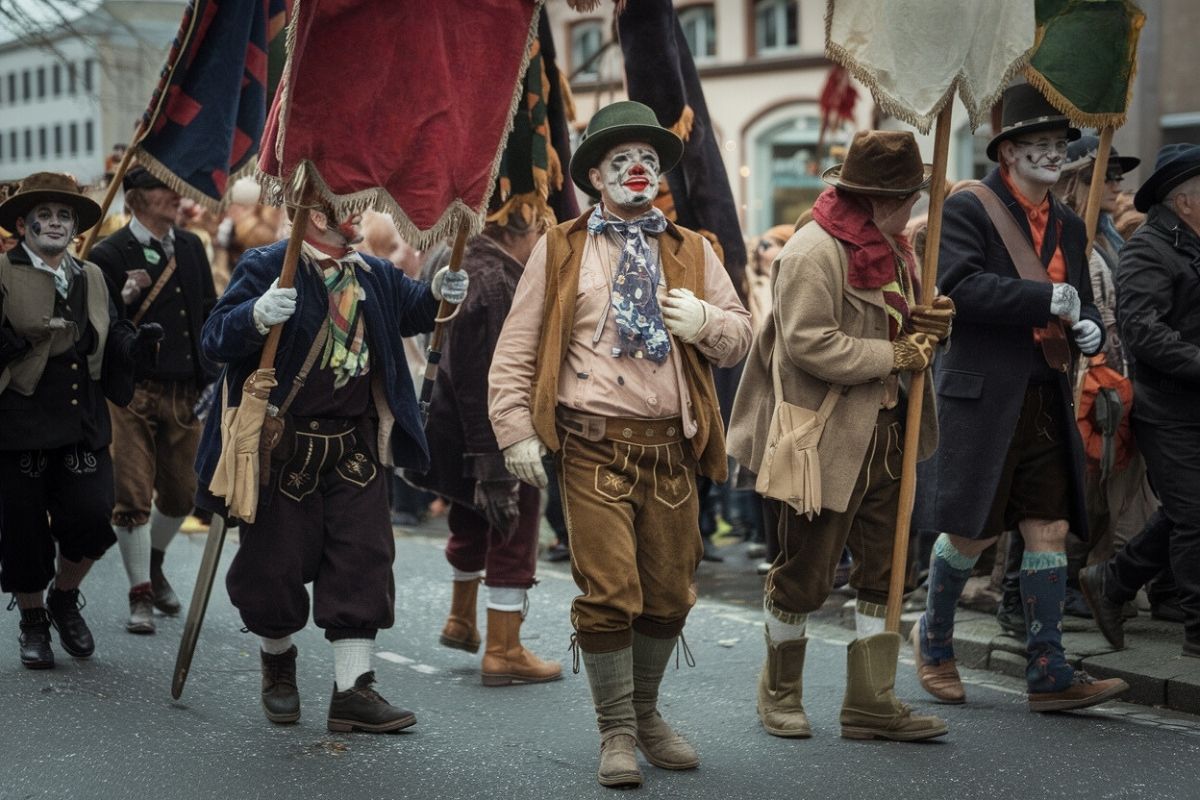
Narrenrevolte—a term that might sound unfamiliar but holds a fascinating slice of history. Ever wondered what sparked this unique event? Narrenrevolte, or the "Fools' Revolt," was a peculiar uprising in medieval Germany where jesters and common folk stood against the authorities. This revolt wasn't just a random act of rebellion; it was a significant moment that highlighted the social tensions of the time. Imagine jesters, who were usually the entertainers, suddenly becoming the voice of dissent. Intrigued yet? Let's dive into 30 captivating facts about Narrenrevolte that will shed light on this extraordinary chapter of history.
Key Takeaways:
- The Narrenrevolte was a medieval uprising led by jesters and common folk against oppressive rulers. It inspired folk songs, festivals, and art, and serves as a symbol of resistance and unity.
- Key figures like Hans Böhm and Jakob Rohrbach led the Narrenrevolte, showing how ordinary people can challenge tyranny. Their bravery and determination continue to inspire others to stand up for their rights.
What is Narrenrevolte?
Narrenrevolte, also known as the "Fools' Revolt," was a fascinating historical event that took place in medieval Germany. This revolt was unique because it involved jesters, fools, and common folk rising against the authorities. Let's dive into some intriguing facts about this unusual uprising.
-
The Narrenrevolte occurred in 1493 in the town of Schlettstadt, now known as Sélestat, located in modern-day France.
-
The revolt was sparked by a combination of social unrest, economic hardship, and dissatisfaction with the ruling class.
-
Jesters and fools, who were usually entertainers, played a significant role in organizing and leading the revolt.
-
The term "Narrenrevolte" translates to "Fools' Revolt" in English, highlighting the involvement of jesters.
-
The uprising was a reaction to the oppressive policies and heavy taxation imposed by the local authorities.
-
The jesters used their wit and humor to rally the common people and gain support for the revolt.
-
The Narrenrevolte is one of the few historical instances where jesters took on a political role.
-
The revolt was short-lived, lasting only a few days before being suppressed by the authorities.
-
Despite its brief duration, the Narrenrevolte left a lasting impact on the town's history and folklore.
-
The jesters involved in the revolt were not just entertainers but also skilled in rhetoric and persuasion.
Key Figures in the Narrenrevolte
Several key figures played crucial roles in the Narrenrevolte. These individuals were instrumental in organizing and leading the uprising.
-
Hans Böhm, also known as "Pfeiferhans," was a prominent jester and one of the main leaders of the revolt.
-
Böhm was known for his charismatic personality and ability to inspire the common people.
-
Another key figure was Jakob Rohrbach, a local blacksmith who joined forces with the jesters.
-
Rohrbach's involvement added credibility to the revolt, as he was a respected member of the community.
-
The jesters and common folk formed a makeshift army to challenge the local authorities.
-
The leaders of the revolt used their knowledge of local politics to strategize and plan their actions.
-
Despite their efforts, the leaders were eventually captured and executed by the authorities.
-
The execution of the leaders served as a warning to others who might consider rebelling.
-
The bravery and determination of these key figures are remembered in local folklore and legends.
-
The Narrenrevolte is often cited as an example of how ordinary people can challenge oppressive regimes.
Cultural Impact of the Narrenrevolte
The Narrenrevolte had a significant cultural impact, influencing local traditions, folklore, and even literature.
-
The revolt inspired numerous folk songs and ballads that are still sung in the region today.
-
Local festivals and celebrations often include reenactments of the Narrenrevolte.
-
The jesters' role in the revolt has been romanticized in various stories and plays.
-
The Narrenrevolte is considered a symbol of resistance against tyranny and oppression.
-
The event has been the subject of academic studies and historical research.
-
The revolt is commemorated in the town of Sélestat with plaques and monuments.
-
The Narrenrevolte has been depicted in various forms of art, including paintings and sculptures.
-
The jesters' clever use of humor and satire during the revolt has been praised by historians.
-
The Narrenrevolte serves as a reminder of the power of unity and collective action.
-
The legacy of the Narrenrevolte continues to inspire people to stand up for their rights and challenge injustice.
The Final Word on Narrenrevolte
Narrenrevolte, a fascinating chapter in history, showcases the power of collective action. These medieval uprisings, driven by peasants and common folk, challenged the status quo. They weren't just about rebellion; they were about demanding justice and fair treatment. The courage displayed by these individuals reminds us of the importance of standing up for what's right.
Understanding Narrenrevolte gives us insight into the struggles and resilience of past societies. It highlights how ordinary people can influence significant change. These revolts, though often overlooked, played a crucial role in shaping the social and political landscape of their time.
So, next time you think about historical revolts, remember the Narrenrevolte. Their legacy is a testament to the enduring human spirit and the quest for justice. History isn't just about kings and battles; it's also about the everyday heroes who dared to make a difference.
Frequently Asked Questions
Was this page helpful?
Our commitment to delivering trustworthy and engaging content is at the heart of what we do. Each fact on our site is contributed by real users like you, bringing a wealth of diverse insights and information. To ensure the highest standards of accuracy and reliability, our dedicated editors meticulously review each submission. This process guarantees that the facts we share are not only fascinating but also credible. Trust in our commitment to quality and authenticity as you explore and learn with us.
